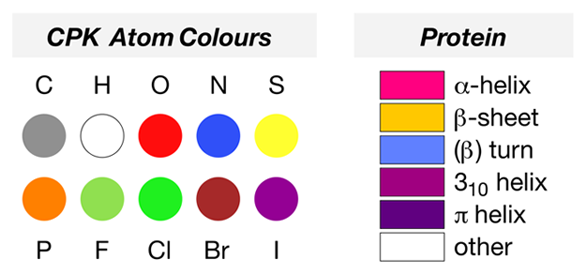Imatinib (Gleevec)
Mechanism of action
Tyrosine kinase enzymes are key regulators of cell growth processes. They are targeted by a variety of new anticancer drugs, and the first protein kinase inhibitor to reach the market was imatinib (Gleevec®), a landmark in anticancer therapy and the first drug to target a molecular structure that is unique to a cancer cell. It acts as a selective inhibitor for a hybrid tyrosine kinase known as Bcr-Abl, which is active in chronic myeloid leukemia cells bearing the genetically-abnormal Philadelphia chromosome.
Critical to the binding of imatinib is the adoption by the kinase of an inactive conformation, in which the centrally located activation loop is folded up inside the protein structure, with the enzyme's key tyrosine (Tyr-393) not phosphorylated. The drug occupies the location of the cofactor, ATP, so not only is the structure inactive, but phosphorylation (i.e. activation) cannot take place. For an optimised view in the JSmol window, reload the file and select the following sequence of buttons:
Drug pocket trace > Figure 3 A view > green activation loop > H-bonds on > Show white O(4)

Structure of the kinase domain of c-Abl in complex with Imatinib (Gleevec) [PDB structure code 1IEP]
B. Nagar, W. G. Bornmann, P. Pellicena, T. Schindler, D. R. Veach, W. T. Miller, B. Clarkson and J. Kuriyan, Cancer Res., 2002, 62, 4236–4243 (PubMed: 12154025)
